Imagine a world where a tweet can shape a student’s future or a blog post can change the course of an entire educational institute. That’s the power of digital marketing in the education sector today. In this fast-changing digital age, educational institutions might use new marketing tactics. Instead, they’re embracing digital strategies to connect meaningfully with students, parents, and educators. A school or university can dramatically transform its outreach and enrollment processes with the right approach. As we explore these strategies, let’s remember the role of tools like Plerdy in enhancing website usability and conversion rates, which are crucial for any successful digital marketing plan.
Understanding Your Target Audience for the Education Industry
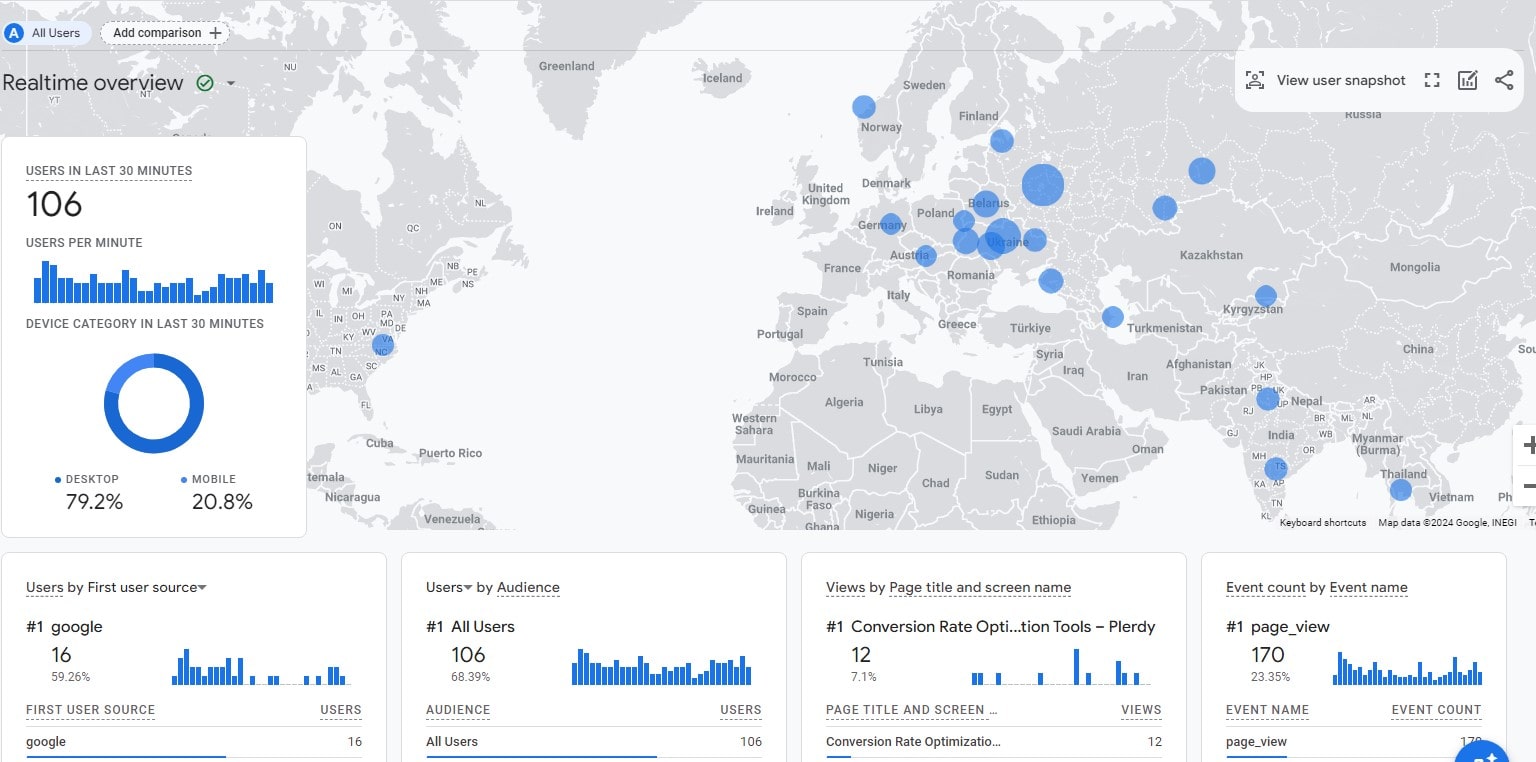
Ever wondered why some educational institutions effortlessly resonate with their audience? The secret lies in understanding who they are reaching out to. The education industry is not just about imparting knowledge; it’s about connecting with individuals with distinct aspirations, needs, and preferences. This section dives into the essence of identifying and understanding your target audience.
- Identifying Your Audience: Knowing your audience is paramount before crafting any marketing strategy. This includes prospective students, parents, and sometimes educators for educational institutions. Each group has unique concerns and motivations. Prospective students might be seeking career advancement or personal growth opportunities, while parents often prioritize the safety and reputation of institutions. To effectively reach them, detailed demographic research is essential. Utilize tools like surveys, social media analytics, and market research reports to gather data on age groups, interests, and behavioral patterns. A Pew Research Center study on how different age groups use social media can help you target digital marketing.
- Creating Effective Personas: Once you have demographic data, the next step is to create personas. These are fictional representations of your ideal students or parents based on real data and market research. Personas help visualize the audience’s goals, challenges, and decision-making processes. For example, a persona for a university might be ‘Emily, a 20-year-old student passionate about environmental science, seeking hands-on learning experiences’. Developing such detailed personas allows for more targeted and relevant marketing strategies. Websites like HubSpot offer resources and tools for persona creation, aiding in this crucial step.
Understanding your audience is crucial to marketing. By identifying your audience and creating detailed personas, you can ensure your marketing efforts resonate deeply and effectively with those you aim to reach. In the education industry, it’s not just about reaching an audience; it’s about connecting with future learners and leaders.
Digital Marketing Strategies for the Education Industry: Optimizing for Mobile Users
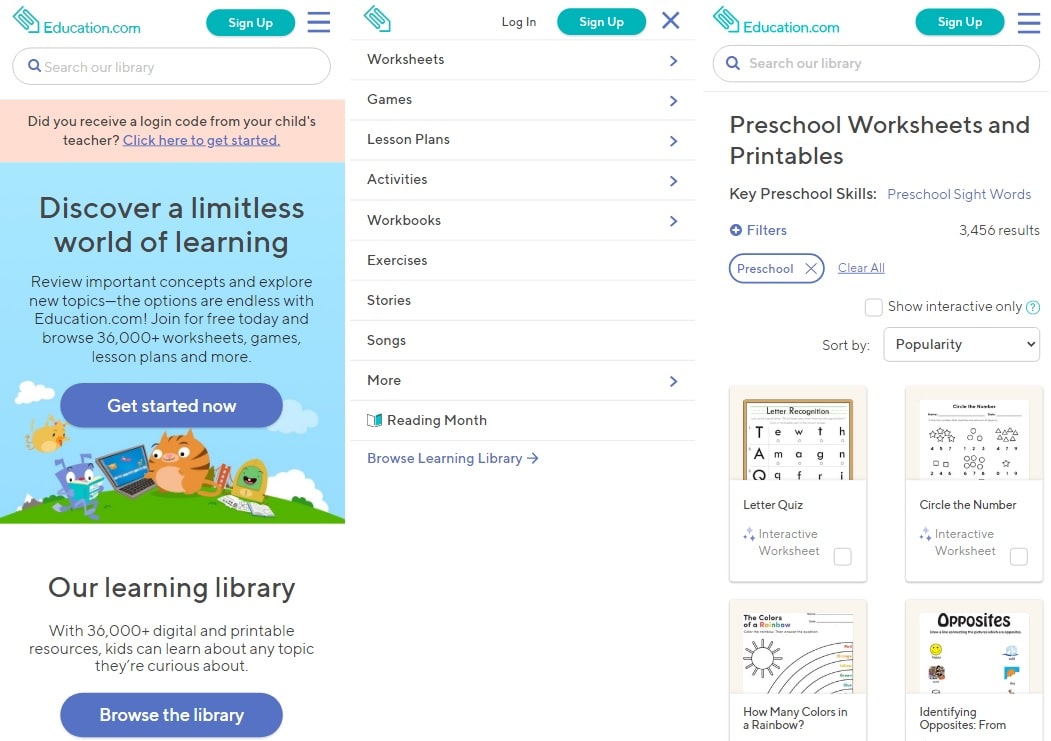
In today’s rapidly evolving digital world, where mobile devices are the primary portals to knowledge, optimizing digital marketing strategies for mobile users is crucial for the education industry. If educational platforms and marketing content are not tailored for mobile accessibility, they risk alienating a vast segment of their digital audience. This segment delves into effective digital marketing strategies for captivating the mobile-centric audience, a vital component in the contemporary digital education landscape.
- Adapting Education Content for Mobile Devices: The initial step in deploying effective digital marketing for education involves ensuring your content and platforms are fully optimized for mobile usage. This process requires implementing responsive design practices, enabling your educational website and its digital marketing content to adjust to varying screen sizes and resolutions fluidly. Tools like Google’s Mobile-Friendly Test can help assess your site’s mobile adaptability. The mobile experience extends beyond aesthetics to include functionality—swift page loading is essential, as highlighted by Google’s finding that 53% of mobile website visits are dropped if loading takes more than 3 seconds. Accelerated Mobile Pages (AMP) can be critical in enhancing the speed and engagement of your digital marketing content on mobile platforms.
- Elevating Mobile Engagement Through Digital Marketing: In digital marketing for the education sector, the mobile user experience is paramount. Mobile users prefer concise and direct content, catering to their expectations for quick information retrieval. Digital marketing strategies must, therefore, ensure that calls-to-action (CTAs) are prominently displayed and easily actionable on mobile screens. Integrating mobile-specific features, such as click-to-call buttons or interactive chatbots, can significantly improve engagement in your digital marketing efforts. Furthermore, leveraging local SEO in digital marketing strategies is essential for education institutions targeting local demographics. Moz emphasizes that optimizing for local search through precise business listings and localized keyword optimization is crucial for connecting with mobile users seeking educational opportunities nearby.
In summary, optimizing for mobile users is not merely a trend but a foundational aspect of digital marketing in the education industry. As reliance on mobile devices for accessing information and making decisions intensifies, providing a responsive, rapid, and user-friendly mobile experience becomes indispensable for effective digital marketing in education. The digital age demands that educational institutions make a compelling first impression on mobile users, ensuring they remain engaged and receptive to the educational opportunities presented.
Leveraging Social Media Effectively for the Education Industry
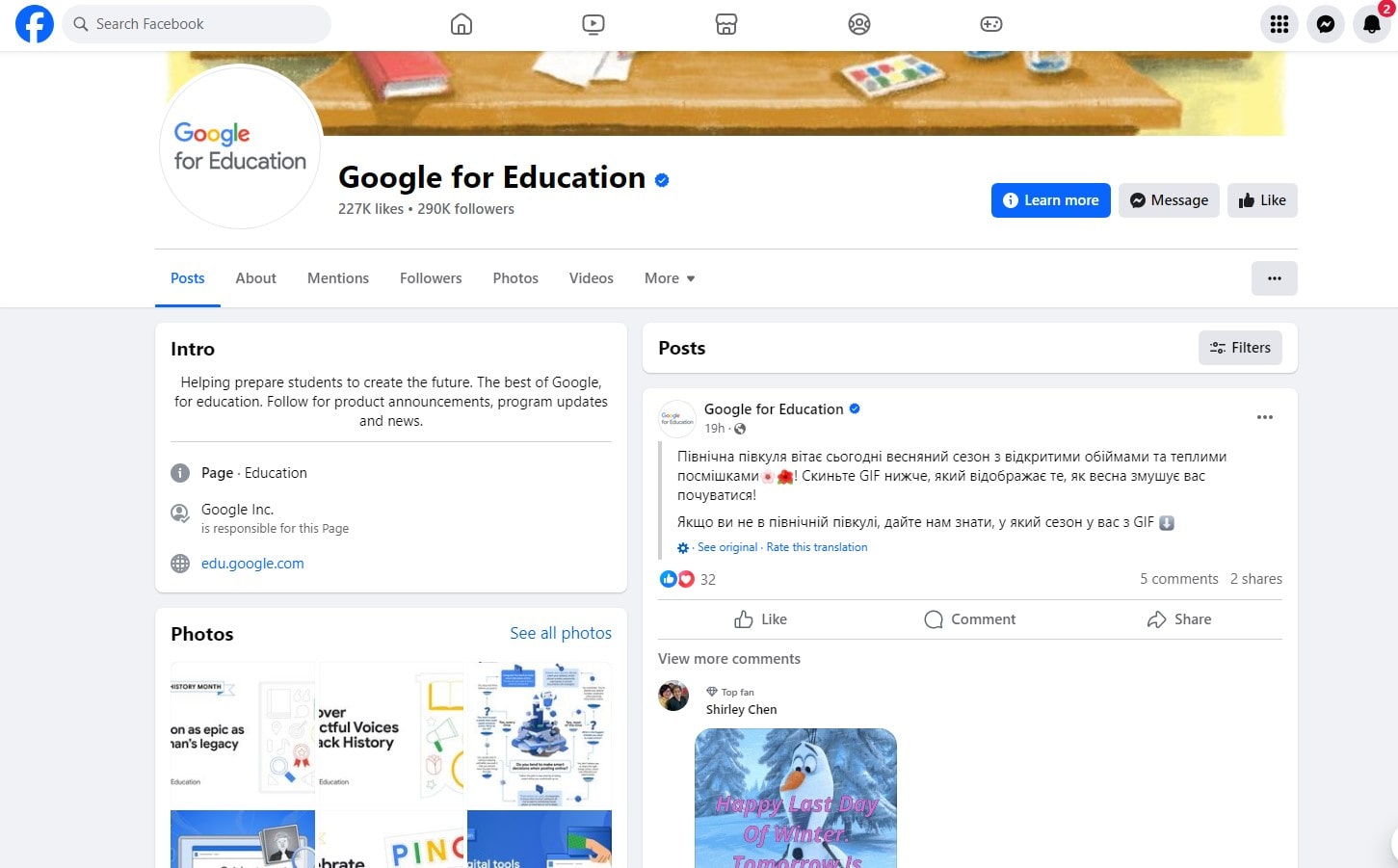
In today’s digital world, if educational institutions aren’t making noise on social media, they’re invisible. Social media isn’t just a platform; it’s a potent tool for connecting, engaging, and recruiting students. Here, we delve into effective strategies to harness the power of social media for the education sector.
- Choosing the Right Platforms: The first key step is selecting the right social media platforms. Each platform serves a different audience and purpose. LinkedIn, for instance, is ideal for higher education institutions targeting professionals and alumni, as highlighted by LinkedIn’s marketing solutions blog. On the other hand, platforms like Instagram and TikTok are more suitable for reaching a younger demographic with visual and creative content. Effective interaction requires knowing where your audience spends most of their time. Pew Research Center surveys can help you choose social media networks based on demographics.
- Content & Engagement Strategies: After choosing your platforms, create and curate audience-friendly content. Discuss success, campus life, and education. Interactive content like polls, live Q&A sessions, and virtual tours can significantly boost engagement. Maintaining a consistent posting schedule is essential, as consistency is key in social media marketing. Respond to comments and messages to establish a brand community. Social media is a two-way street; it’s as much about listening and interacting as it is about broadcasting.
Effectively leveraging social media in the education industry requires a strategic approach: choosing the right platforms and crafting content that engages and resonates with your audience. It’s not just about being present; it’s about creating meaningful interactions that build your institution’s brand and community. In education, social media is not just a tool; it’s a gateway to the hearts and minds of the next generation.
Utilizing SEO and Content Marketing
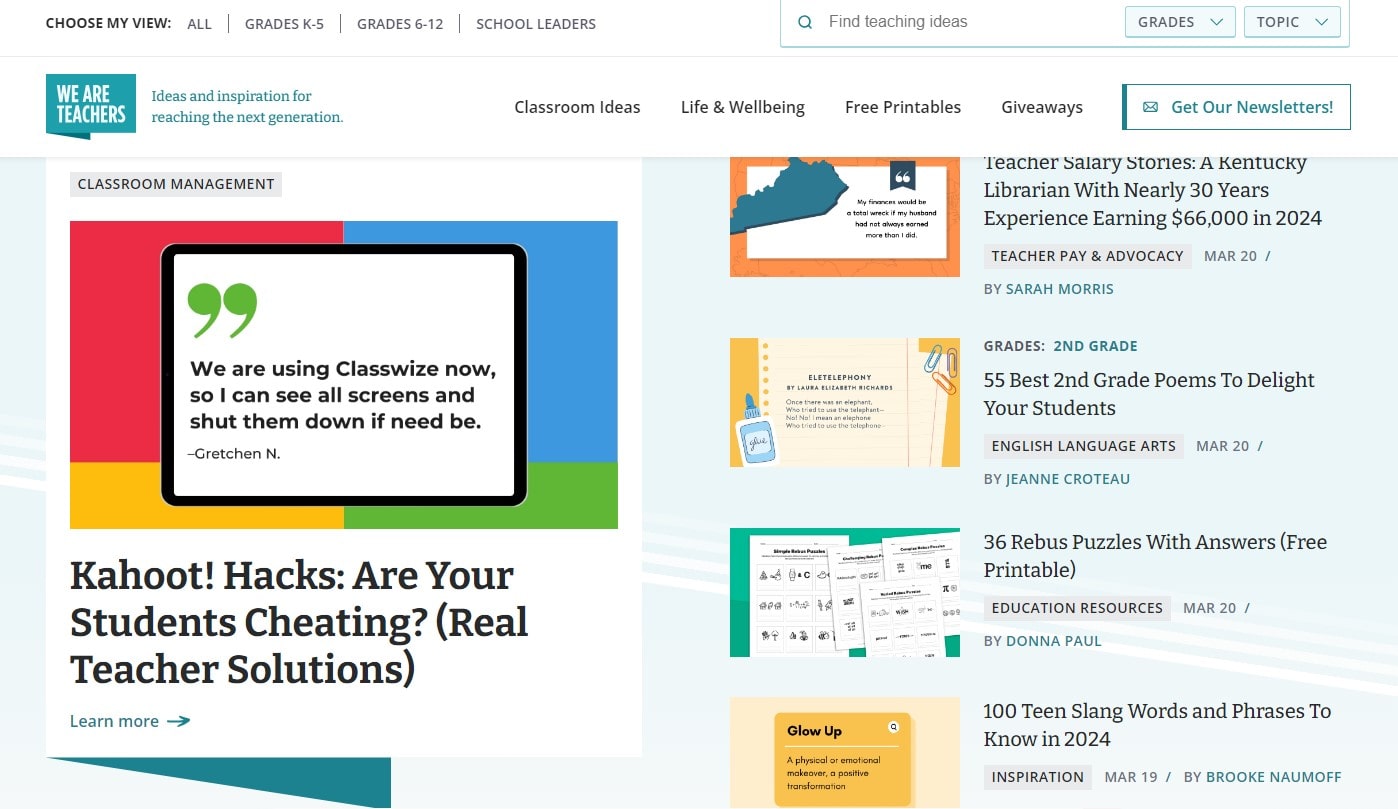
SEO and content marketing guide prospective students to your school in the enormous ocean of internet content. In the digital age, these tools are not just add-ons but essentials in the marketing toolkit of education providers. This section unravels how to effectively use SEO and content marketing to enhance your institution’s online presence and attract more students.
- SEO Basics for Education: SEO for the education sector revolves around optimizing your website to rank higher in search engine results. This involves keyword research to understand what prospective students are searching for. Google Keyword Planner might provide education search phrases. Adding these keywords to your website’s content, meta descriptions, and titles can boost visibility. However, SEO isn’t just about keywords; it’s also about creating quality content that answers your audience’s questions. Moz offers a comprehensive guide on SEO best practices, emphasizing the importance of content quality, link building, and website optimization. Good SEO requires technical expertise and audience-focused content.
- Content Strategy: Your content strategy should deliver valuable information that resonates with your target audience. This could include blog posts about career opportunities after graduation, tips for successful study habits, or insights into campus life. Content should be informative, engaging, and shareable. It’s also crucial to regularly update your content to keep it fresh and relevant. HubSpot says consistently updated content can lead to higher engagement and repeat visits. Infographics, videos, and podcasts can appeal to varied tastes, making your content more accessible and attractive to a wider audience.
Effectively utilizing SEO and content marketing is more than just driving traffic; it’s about establishing your educational institution as a trustworthy and informative source. These tactics can boost your online visibility, attract prospective students, and create a strong digital presence representing the quality and ideals of your educational offers. Content reigns in education marketing and unlocks your institution’s potential.
Email Marketing Strategies for the Education Industry
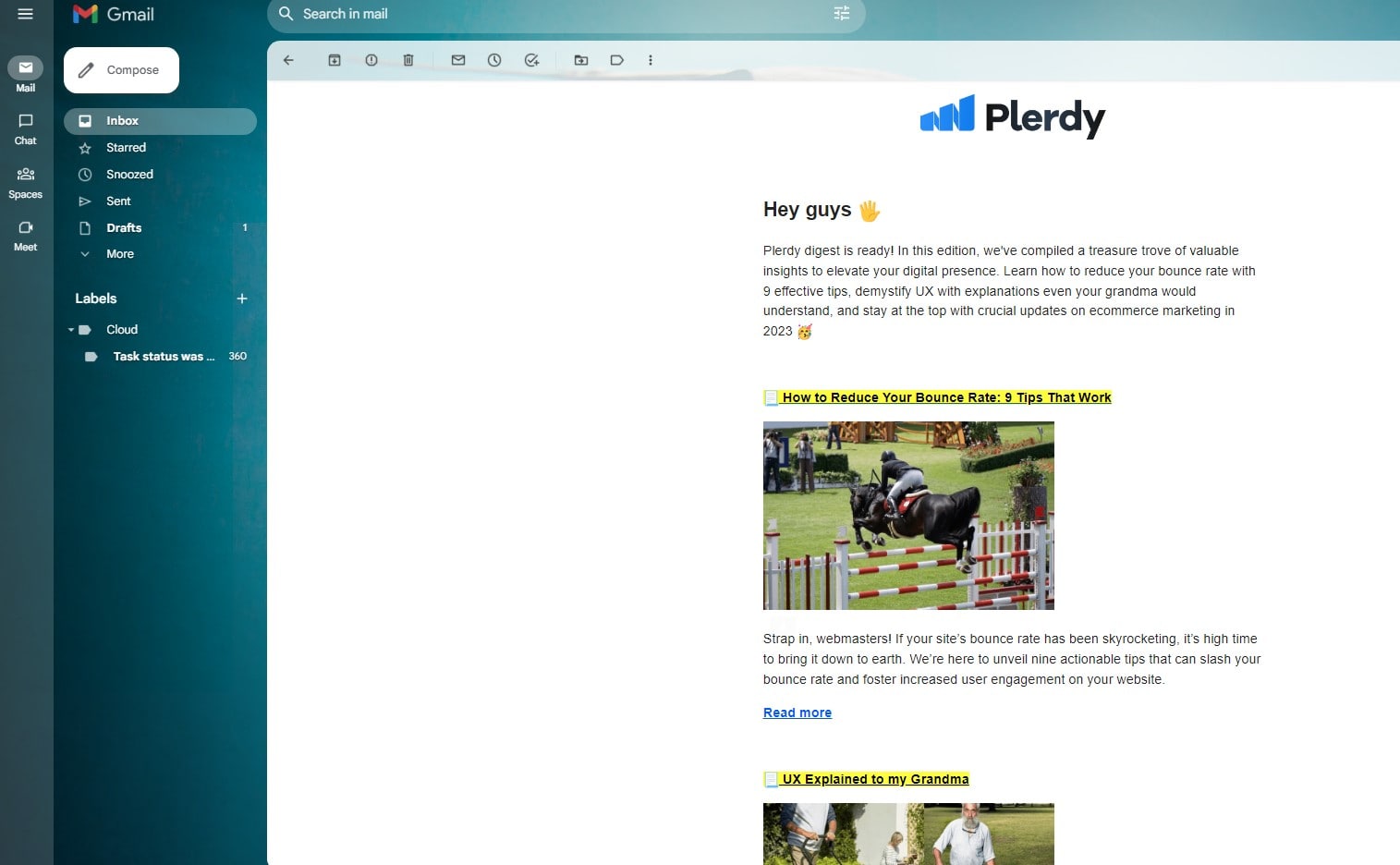
In an era of digital communication, email marketing is a personalized beacon in the vast sea of online interaction. For educational institutions, it’s a direct line to students, parents, and educators, offering information, engagement, and calls to action. Here’s how to craft email marketing strategies that resonate and convert.
Effective email marketing in the education sector hinges on personalization and relevance. It’s about sending the right message to the right person at the right time. Segment your email list using user profiles like prospective students, existing students, alumni, and parents. This segmentation allows for tailored content that addresses each group’s interests and needs.
For instance, prospective students might receive emails about application deadlines and campus life, while alumni might get updates about networking events and continuing education opportunities. The key is to make each email feel like speaking directly to the recipient, adding a personal touch that enhances engagement.
Additionally, automating email campaigns can save time and ensure consistent communication. Tools like Mailchimp or Constant Contact provide automation services that help manage and schedule emails effectively.
It’s crucial to track the performance of your email campaigns. Open, click-through, and conversion rates reveal what is working and what is not. According to Campaign Monitor, the average open rate for education-related emails is around 26.2%, serving as a benchmark for evaluating the success of your campaigns.
Email marketing in the education sector is a powerful tool when executed, focusing on personalization, segmentation, and automation. Create compelling email content that builds a lasting relationship with your organization by analyzing and meeting your audience’s needs. In education, an email is more than just a message; it’s a bridge connecting learners with opportunities, knowledge, and community.
Video Marketing for Engagement
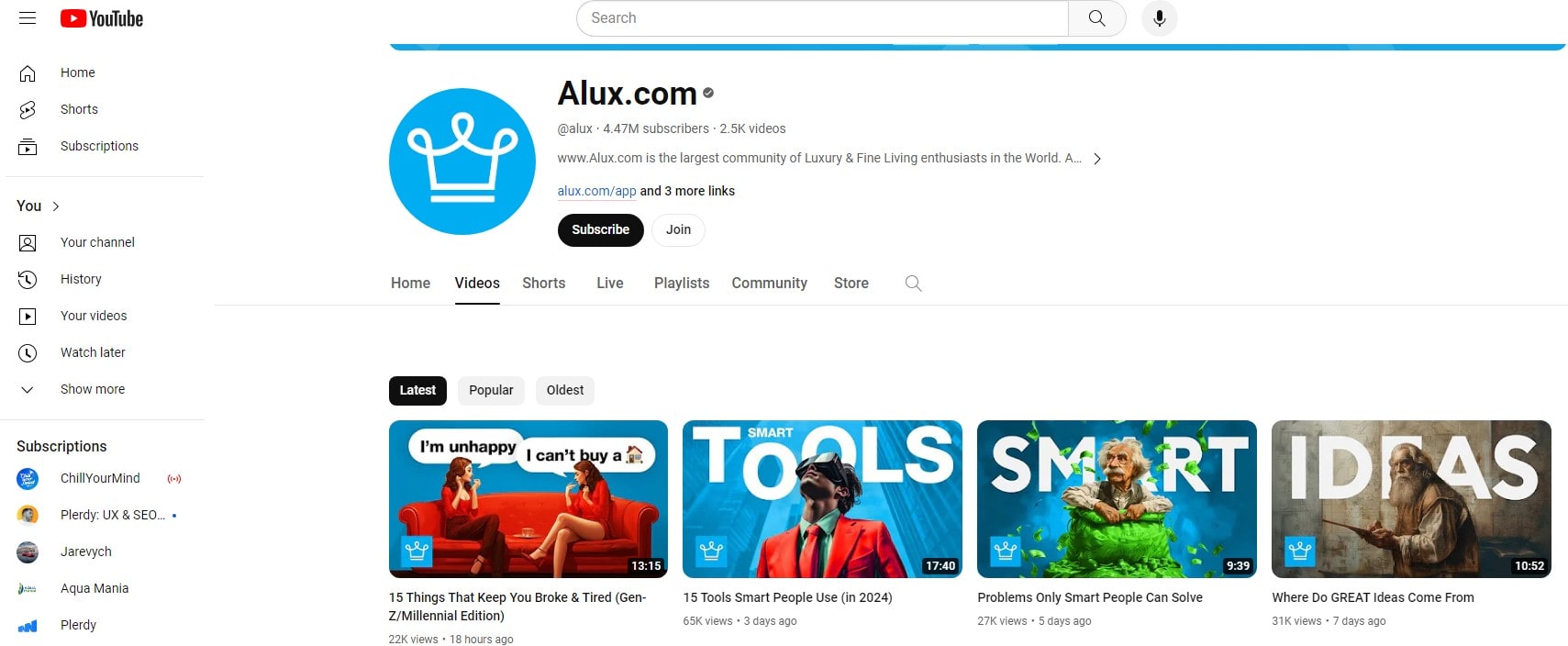
In today’s digital landscape, video marketing is a beacon of engagement in the education industry. It’s not just a trend; it’s a transformative tool that brings educational content and experiences to life. This approach is crucial in a digital strategy where captivating visuals and storytelling are key to connecting with a diverse audience.
Video marketing in the education sector harnesses the power of visual storytelling to convey the essence of an institution’s offerings. For instance, a well-produced video tour of campus can give prospective students a real feel of the environment, something more than words and images alone might be needed to achieve. Incorporating testimonials, lecture snippets, and student life into video content can significantly enhance engagement and interest.
High-quality production and strategic digital distribution are vital to video marketing success. Videos must be optimized for search engines, with appropriate keywords in titles and descriptions to boost digital visibility. Moreover, sharing these videos on social media platforms and embedding them on the institution’s website increases their reach and effectiveness. According to Cisco, video traffic will exceed 82% of consumer internet traffic by 2022.
Video marketing is indispensable to the education industry’s comprehensive digital marketing strategy. It is an exciting approach to promoting the school’s capabilities and attracting students. In a visual-driven digital age, educational institutions must use video marketing to stand out and engage their audience.
Influencer and Affiliate Marketing for the Education Sector

In the digital age, the education sector increasingly turns to influencer and affiliate marketing as strategic pillars of their digital marketing campaigns. These tactics amplify the message and add a layer of credibility and authenticity, which is essential in the digital world.
Influencer marketing involves partnering with individuals with a significant digital following who can influence potential students’ decisions. This could be an alumnus with a strong social media presence, an educator with a popular blog, or a student influencer on platforms like Instagram or YouTube. The key is collaborating with influencers whose followers align with the institution’s target audience. This digital alliance can create authentic content that resonates with prospective students, who trust peer recommendations over traditional advertising.
On the other hand, Affiliate marketing focuses on establishing partnerships with websites or digital content creators who promote the institution’s programs in exchange for a commission on leads or enrolments. This performance-based marketing strategy can be highly effective as it leverages affiliates’ digital reach and credibility, translating into targeted exposure and potential student recruitment.
Influencer and affiliate marketing are vital components of a modern digital marketing strategy in education. These approaches offer a way to reach potential students in the digital spaces they frequent with messages that are not only persuasive but also come with an endorsement from sources they trust. In a digital environment where authenticity and peer opinion hold great value, these strategies can be game-changers for educational institutions looking to enhance their digital presence and attract prospective students.
Data-Driven Decision Making
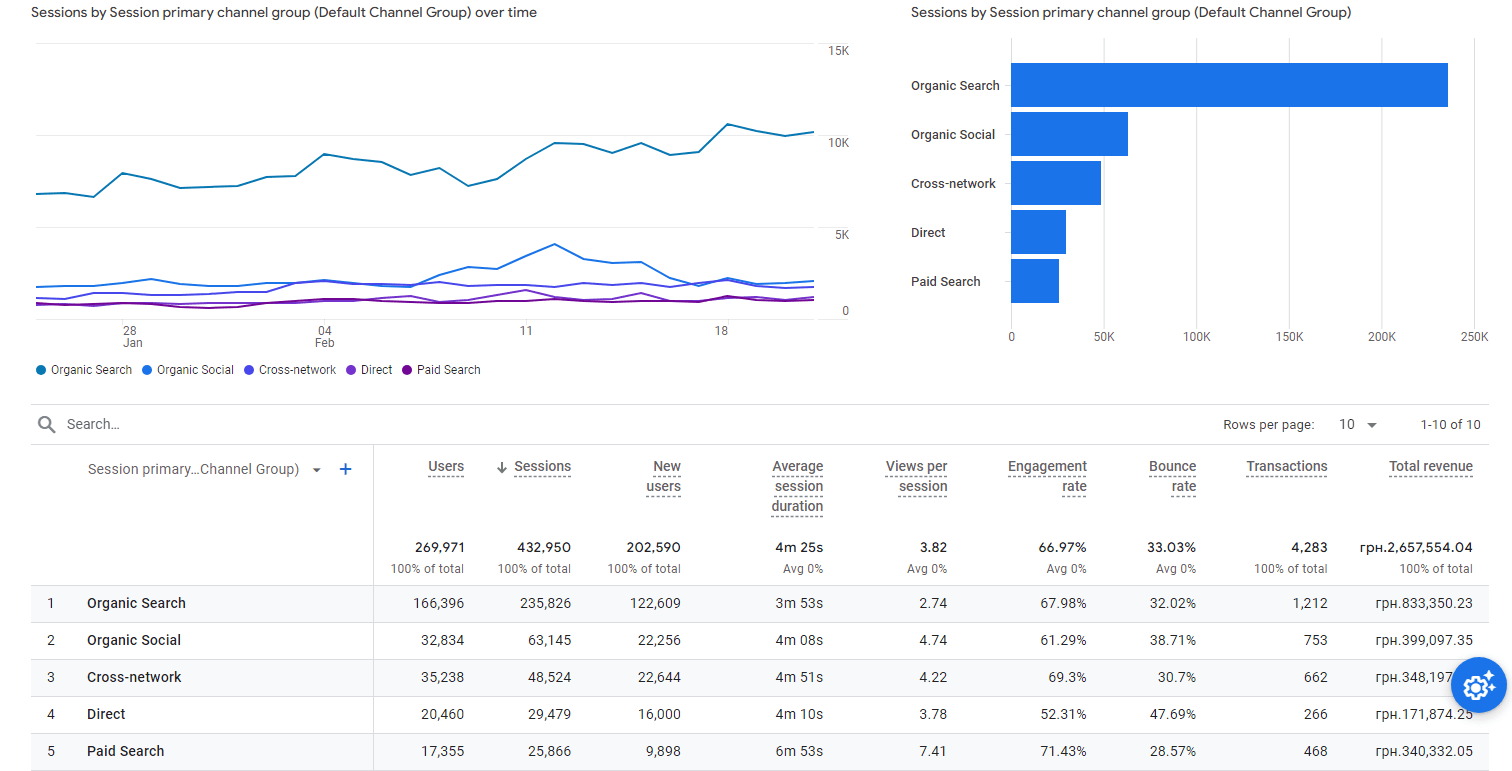
In digital marketing for educational institutions, data isn’t just numbers; it’s the compass that guides strategic decisions. With the wealth of data at our fingertips, the challenge isn’t collecting it but interpreting it effectively to make informed decisions. This is where data-driven decision-making becomes pivotal.
The essence of data-driven decision-making lies in gathering and analyzing relevant data to understand the effectiveness of your digital marketing strategies. Tools like Google Analytics provide information on website traffic, user behavior, and conversion rates. By evaluating this data, educational institutions can determine which digital marketing strategies work and which require improvement. For instance, website data showing high traffic but low engagement rates might indicate a need for more captivating content or a user-friendly website design.
Beyond website analytics, social media metrics offer insights into engagement levels, audience demographics, and content performance. This data can inform decisions about content strategy, platform focus, and advertising spending. For instance, if data shows prospective students engage more with video content on social media, institutions can allocate more resources to video production.
Effective educational digital marketing requires data-driven decision-making. It enables marketers to move beyond guesswork and make strategic decisions based on concrete insights. By leveraging data, educational institutions can optimize their digital marketing efforts, ensuring they resonate with their target audience and achieve their marketing objectives. In the digital age, data isn’t just information; it’s the key to unlocking the full potential of your marketing strategies.
Implementing Paid Advertising for Enhanced Digital Marketing in Education
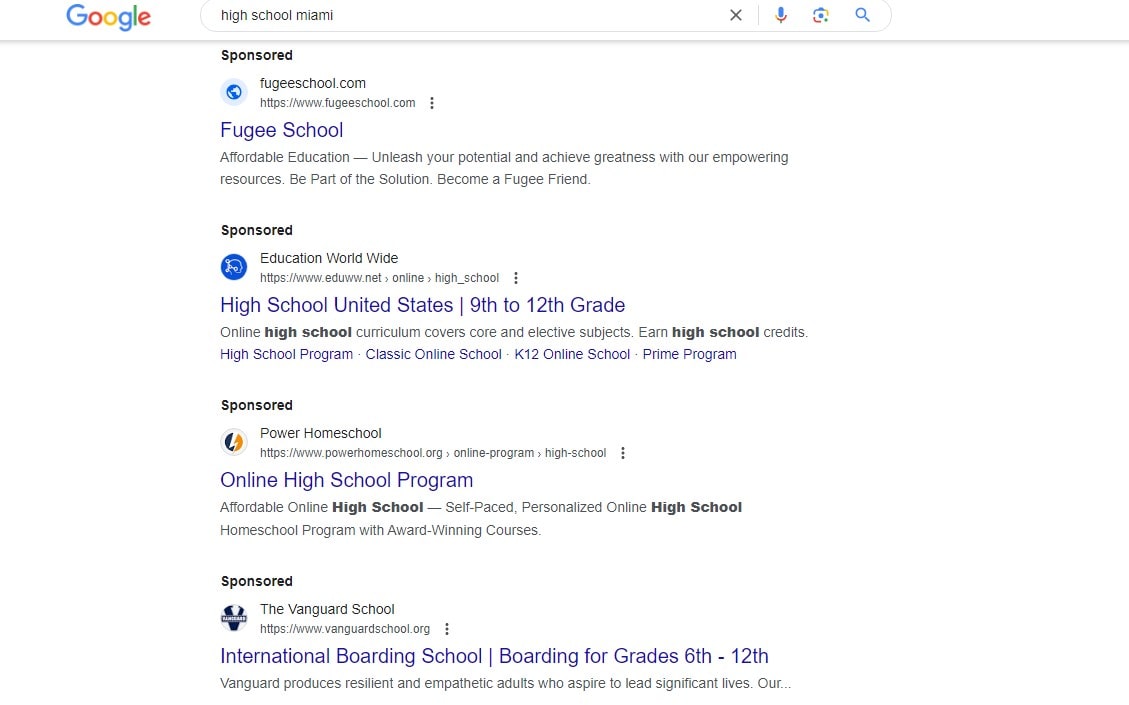
Within digital marketing, paid advertising emerges as a pivotal strategy for the education sector. It aims to achieve a harmonious blend of investment and considerable return on investment (ROI). This approach transcends mere expenditure for visibility; it embodies a strategic infusion of resources into digital avenues to secure measurable achievements.
Paid advertising, when tailored for the education industry, employs a variety of digital platforms to captivate potential students. From leveraging Google Ads for premier positioning in search results based on specific keywords to harnessing the targeted capabilities of social media advertisements on platforms like Facebook or Instagram, the objective remains to craft ads that are not only compelling but also meticulously aligned with the interests and locales of your intended audience. WordStream highlights that ads within the education field enjoy an average click-through rate of 3.78% on the Google Search Network, underscoring the efficacy of well-executed digital marketing campaigns.
The essence of assessing the ROI from these initiatives is crucial, extending beyond the immediate metrics such as click-through rates and impressions to encompass an evaluation of how these digital endeavors bolster overarching objectives, including enrollment enhancement and brand recognition elevation. The application of analytics tools is indispensable, offering a lens through which the impact of your campaigns can be discerned, thereby facilitating strategic refinements for augmented outcomes.
Paid advertising stands as a cornerstone within the digital marketing edifice for education, possessing the capacity to elevate visibility and substantially attract prospective learners. Yet, the quintessence of these ventures hinges on relentless monitoring and fine-tuning to guarantee an optimum ROI. Through diligent planning and analytical review of your paid advertising maneuvers, your educational institution is poised to maximize its digital marketing investment, propelling immediate and sustained achievements in educational marketing.
Emerging Trends in the Digital Marketing Education Industry
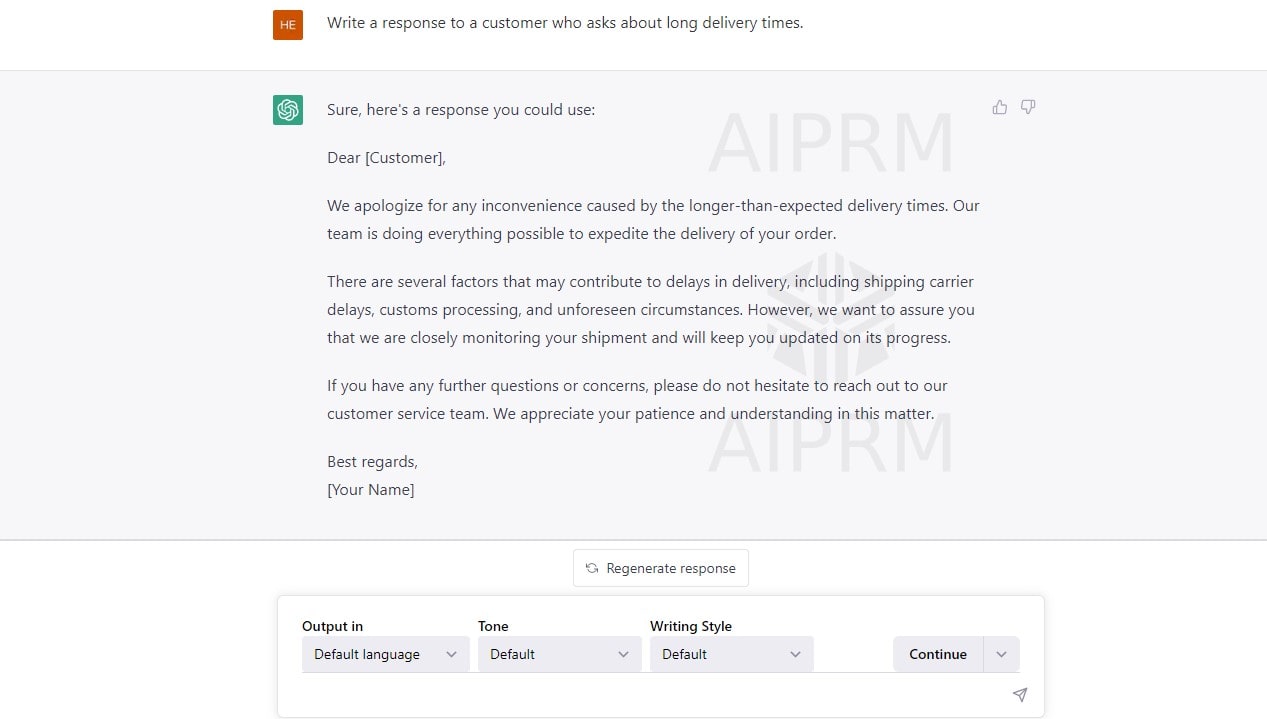
As digital landscapes evolve, so do the trends in digital marketing for the education industry. Institutions must stay ahead of these trends to be competitive and engage their audience.
AI and machine learning are being used in digital marketing techniques. AI-driven algorithms can customize information and recommendations on educational websites and social media platforms based on user behavior and preferences. This personalized approach enhances engagement and improves the chances of conversion. Forbes highlights how AI transforms digital marketing by enabling hyper-personalization and efficient data analysis.
Another emerging trend is integrating virtual and augmented reality (VR and AR) in digital marketing campaigns. These technologies offer immersive experiences, allowing prospective students to tour campuses virtually, engage with interactive learning modules, and get a feel of the institution before stepping on the premises. The immersive nature of VR and AR creates memorable experiences, making them powerful tools in digital storytelling.
Social media platforms continue to evolve, with newer platforms like TikTok gaining popularity, especially among younger audiences. Incorporating these platforms into the digital marketing mix allows educational institutions to reach a wider, more diverse audience. Interactive content, such as live streaming and Q&A sessions, is becoming increasingly popular, fostering real-time engagement and community-building.
The education industry’s digital marketing landscape is continuously shifting, with AI, VR/AR, and evolving social media platforms leading the charge. By embracing these emerging trends, educational institutions can create more engaging, effective, and innovative digital marketing strategies. In a constantly changing digital environment, keeping up with these trends is about connecting with your audience.
Conclusion
In wrapping up, we’ve journeyed through the dynamic world of digital marketing strategies in the education industry. From the personalized touch of email campaigns to the immersive experience of video marketing, each strategy is a piece of the puzzle of digital success. But the digital marketing landscape is ever-expanding, offering new insights and challenges. Hungry for more? Dive into the Plerdy blog, where a wealth of knowledge awaits to enhance your marketing strategies further. Plerdy’s suite of tools is here to streamline your digital marketing efforts, making your journey successful, efficient, and innovative. Your next step in digital excellence is just a click away with Plerdy.
